You might have seen photos of Northern Ireland’s dramatic landscapes, like the Giant’s Causeway or the ruins of Dunluce Castle. Or maybe you’ve heard its name in stories of St. Patrick or the legend of the giant Finn McCool.
But Northern Ireland is more than legend and scenery—you can experience its magic for yourself.
It’s found every day in the charm of its towns, the beauty of its countryside, the rugged coastline, and peaceful mountains.
Let’s explore…
The World’s Best Retirement Havens for 2026
The World’s Best Retirement Havens for 2026
24 Countries Compared, Contrasted, Ranked, and Rated. You don’t have to be rich to enjoy a pampered retirement, you just need to know where to go. With our 35th Annual Global Retirement Index, our experts hand you a detailed roadmap. Details—and a Special Offer—Here

By submitting your email address, you will receive a free subscription to IL Postcards, The Untourist Daily and special offers from International Living and our affiliates. You can unsubscribe at any time, and we encourage you to read more about our Privacy Policy.
Getting There and Getting Around
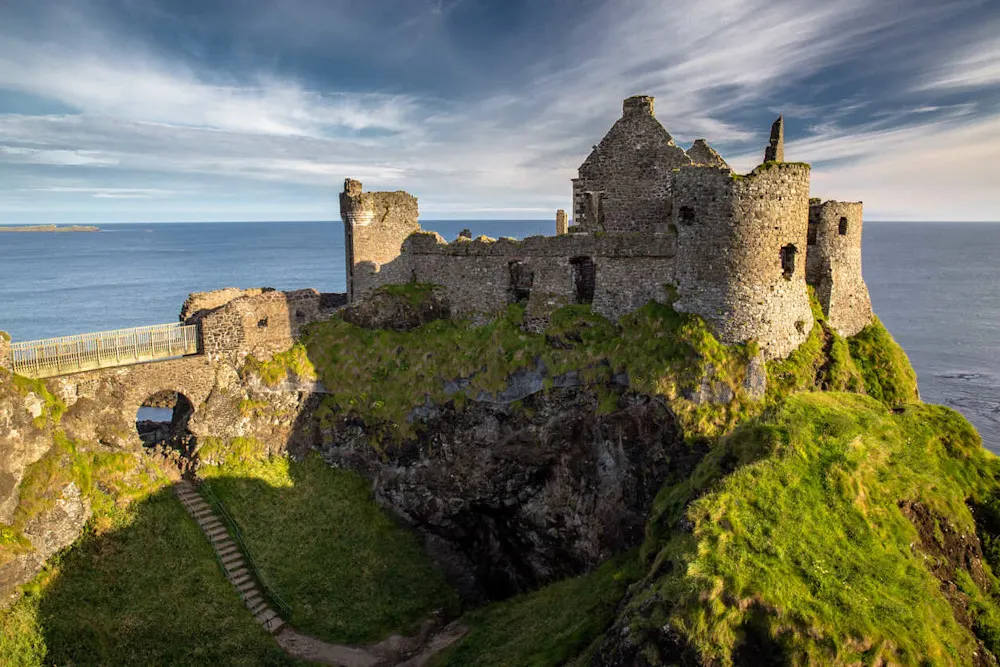
Northern Ireland is the northeastern part of the island of Ireland. It covers around 5,500 square miles and has a population of approximately 1.9 million people.
Northern Ireland welcomes more than 500,000 international visitors each year, along with nearly three million tourists from the rest of the United Kingdom (U.K.) and the Republic of Ireland. Its three main airports and two major ferry ports serve hundreds of thousands of passengers annually.
Additionally, passengers arriving in the Republic of Ireland at Dublin Airport, which receives more than 20 direct flights daily from the U.S., can easily travel north. Flights direct from the U.S. to Shannon Airport on Ireland’s west coast also cross the Atlantic in less than six hours.
Northern Ireland’s public transit system (Translink) operates buses and trains throughout the country and provides connections with the Republic of Ireland.
The new Grand Central Station in Belfast, Northern Ireland’s capital city, is the country’s public transport hub. Other cities and major towns have bus and train stations that provide access to surrounding areas.
Translink has frequent schedules and a large network, so public transport offers an excellent alternative if you don’t want to drive.
If you prefer driving, the road system is extensive and well-maintained. Speed signs are in mph (just like in the U.S.), but remember to drive on the left side of the road! Although most cars in Northern Ireland have manual transmission (stick shift), automatics are becoming more popular. And just so you know, roundabouts seem to be everywhere!
If you need them, healthcare services are available via Northern Ireland’s publicly funded Health and Social Care, which is responsible for most of the hospitals in the country. Private healthcare is also available, with private clinics and hospitals offering treatment. Most large towns have pharmacies.
Northern Ireland’s weather is mild in summer, with average temperatures in the mid-60s F. (Although sometimes it gets much warmer.) Winter months average in the mid-40s F. It rains frequently (so remember to carry your umbrella), but the showers usually don’t last for long!
Visas, Residency, and Citizenship Option
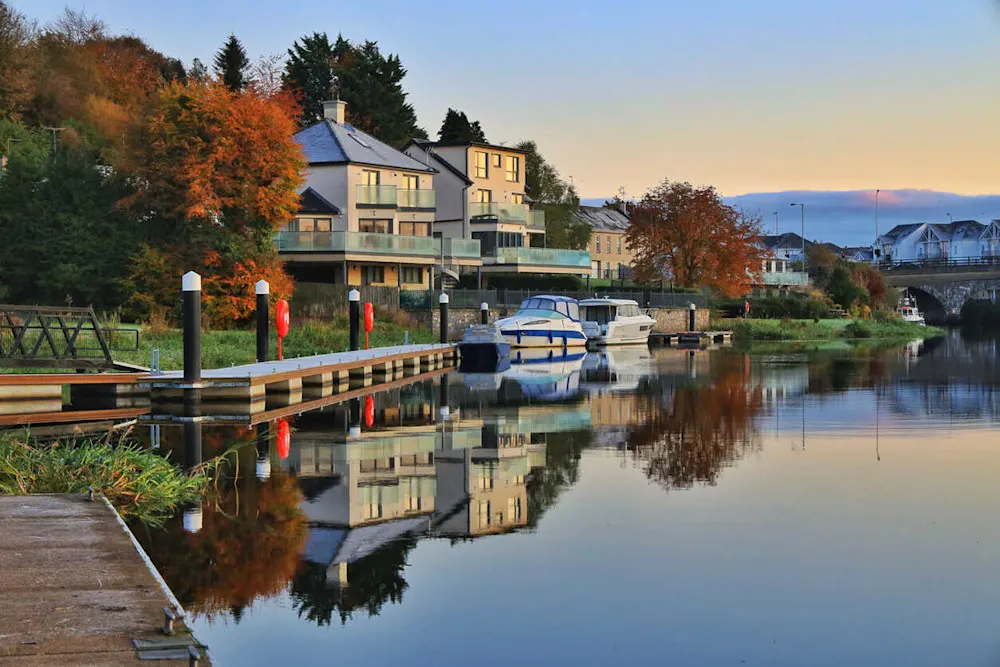
The United Kingdom, including Northern Ireland, and the Republic of Ireland are popular destinations for Americans wanting to live abroad. More than 200,000 Americans live in either the U.K. or Ireland. It’s not surprising this area is so popular—millions of Americans claim Scotch-Irish ancestry, and at least 30 million claim Irish ancestry.
Americans have several options for visiting or staying in Northern Ireland, with visas issued by the United Kingdom government through U.K. Visas and Immigration (UKVI).
Tourists need a valid passport and an ETA (Electronic Travel Authorization) to visit the U.K., including Northern Ireland, for up to six months. You can obtain an ETA online, and it costs £16 (approximately $20 USD). It’s valid for two years or until your passport expires, whichever comes first.
A Student visa could be an option if you meet specific educational and financial requirements. Queen’s University Belfast and Ulster University both welcome international students to their campuses across Northern Ireland.
Several visas for working or living in Northern Ireland, such as the Innovator Founder, Global Talent, and Skilled Worker visas, can potentially lead to permanent residency or citizenship.
The Innovator Founder visa may suit experienced entrepreneurs with an innovative business idea. You don’t need a job offer, and there’s no minimum salary requirement. The visa is valid for three years and can be extended.
A Global Talent visa is aimed at leaders—or potential leaders—in fields like academia, research, arts and culture, or digital technology. It’s initially valid for five years and can be renewed.
Applicants for a Skilled Worker visa must have a job offer and meet minimum salary requirements. This visa is valid for five years initially and is also extendable.
Can you prove British or Irish citizenship by birth or descent? If you were born abroad to a British parent, you may be eligible to apply for a British passport. If you were born abroad and have an Irish parent, or even an Irish grandparent, you may be eligible to apply for an Irish passport. The rules vary depending on the situation.
Cost of Living
Northern Ireland is the happiest place in the United Kingdom, according to the U.K.’s Office of National Statistics!
And residents of Northern Ireland enjoy a lower cost of living than people in other parts of the U.K.
Even in Belfast, one of the most expensive places to live in Northern Ireland, the cost of living is lower than in Washington, D.C.
Let’s look at the details…
The cost of living in Belfast is 24.9% lower than in Washington, D.C. (excluding rent) and 40.6% lower when rent is included. Even purchasing an apartment or paying monthly utilities costs less in Belfast.
Fuel might cost more, but people in Northern Ireland typically drive less. That’s simply because they tend to live closer to what they need, so they walk or cycle more, or use the excellent public transportation system.
Grocery prices in Belfast are 30.5% lower than in Washington, D.C. Major supermarkets and independent retailers in Northern Ireland offer a wide range of locally sourced and produced foods alongside their main product lines. You’ll find seasonal fruit and vegetables, as well as dairy, meat, and baked goods from the region. Most large towns also have independent butchers, greengrocers, and bakeries.
And while you’re shopping in Northern Ireland, keep in mind that the price you see on the label is the price you pay at checkout, unlike in most of the U.S. Plus, there’s no expectation to tip at restaurants (though it’s always appreciated).
Where to Live
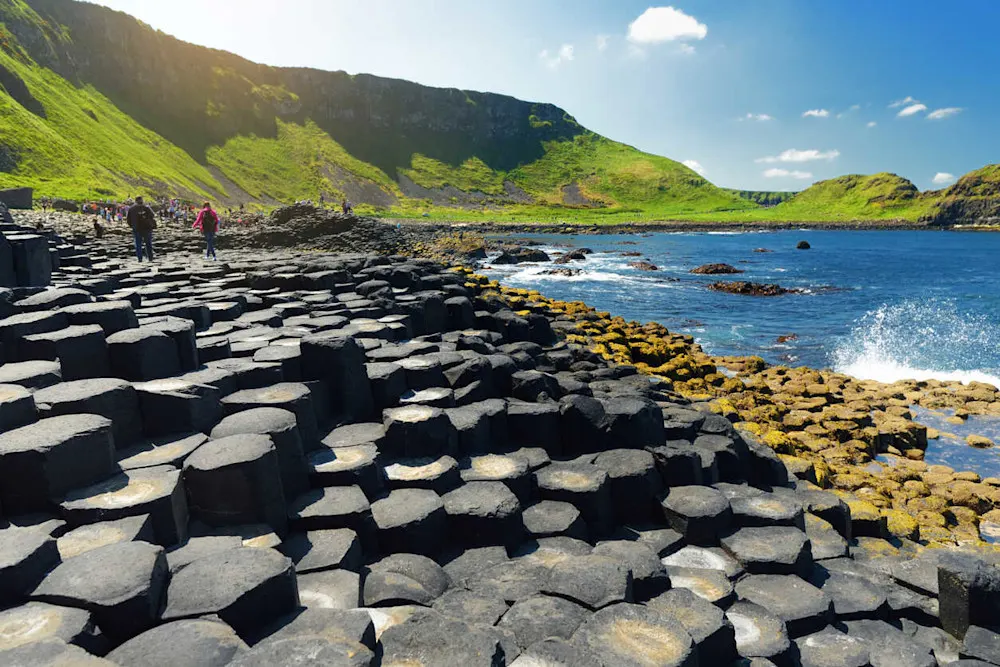
There are many great options to choose from when you’re deciding where to live in Northern Ireland.
The north coast region—Causeway Coast and Glens—and Belfast are two of the most popular destinations for tourists to Northern Ireland, so we’ll focus on those…
The Causeway Coast and Glens
This area offers spectacular scenery, lively entertainment, excellent dining, and plenty of outdoor activities:
Some of the best-known visitor sites in the region include Dunluce Castle, Carrick-a-Rede Rope Bridge, and the Giant’s Causeway (a UNESCO World Heritage Site).
It’s also home to the Old Bushmills Distillery, licensed in 1608, and famous as the oldest licensed whiskey distillery in the world.
Fans of the TV series Game of Thrones might be interested to know that several iconic scenes were filmed in this region.
Golf lovers will appreciate that Royal Portrush Golf Club—host of The Open Championship in 2025—is located here.
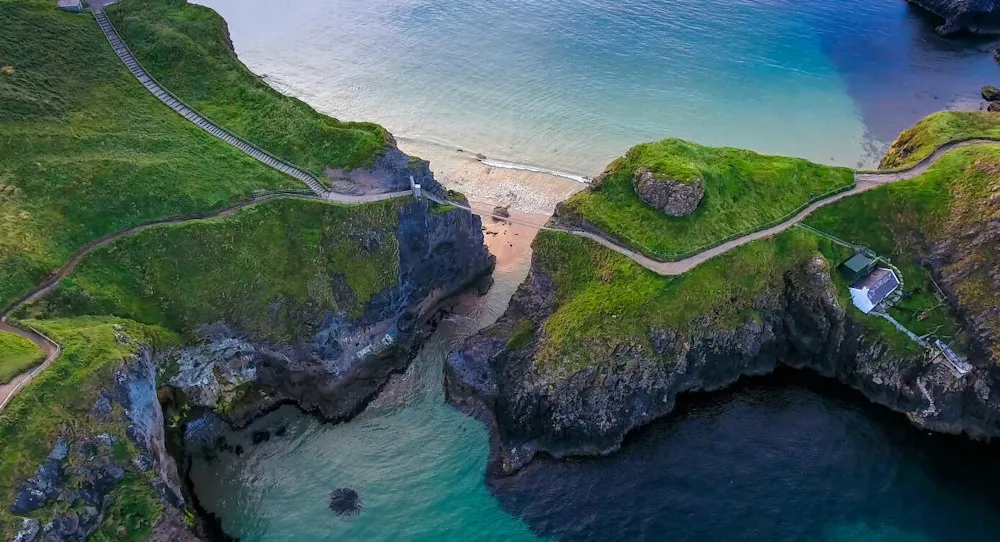
Notable annual events include the North West 200 motorcycle road race in May, the Red Sails in the Sunset Festival in July, and the Ould Lammas Fair in August.
Dining options range from award-winning restaurants to seaside fish and chips, along with local favorites like handmade ice cream and cheesy toasties.
The north coast has long been a favorite with retirees and second homeowners. Recent development has expanded housing options, with everything from apartments and townhouses to detached homes and traditional farmhouses available.
Belfast
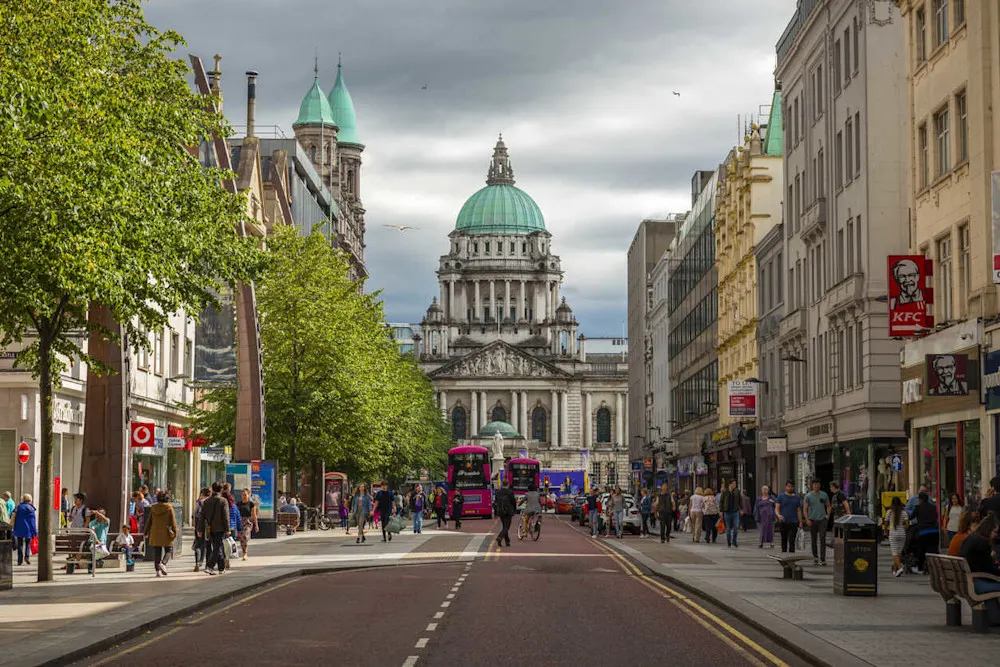
Northern Ireland’s capital city offers everything you’d expect from a vibrant, cosmopolitan center.
The country’s population has grown in recent years, and many newcomers have been drawn to Belfast. That’s no surprise—this dynamic city boasts a wide range of housing options, excellent public transportation, top-tier shopping, and countless entertainment opportunities.
Some of the area’s most popular attractions include Titanic Belfast, the Botanic Gardens, Belfast Zoo, the Ulster Museum, the Grand Opera House, Belfast City Hall, and numerous historic pubs.
Belfast also hosts many major annual events, including the Belfast Marathon and the Cathedral Quarter Arts Festival in May, Belsonic in June, and the Belfast Film Festival in October and November.
A Friendly, Welcoming Lifestyle
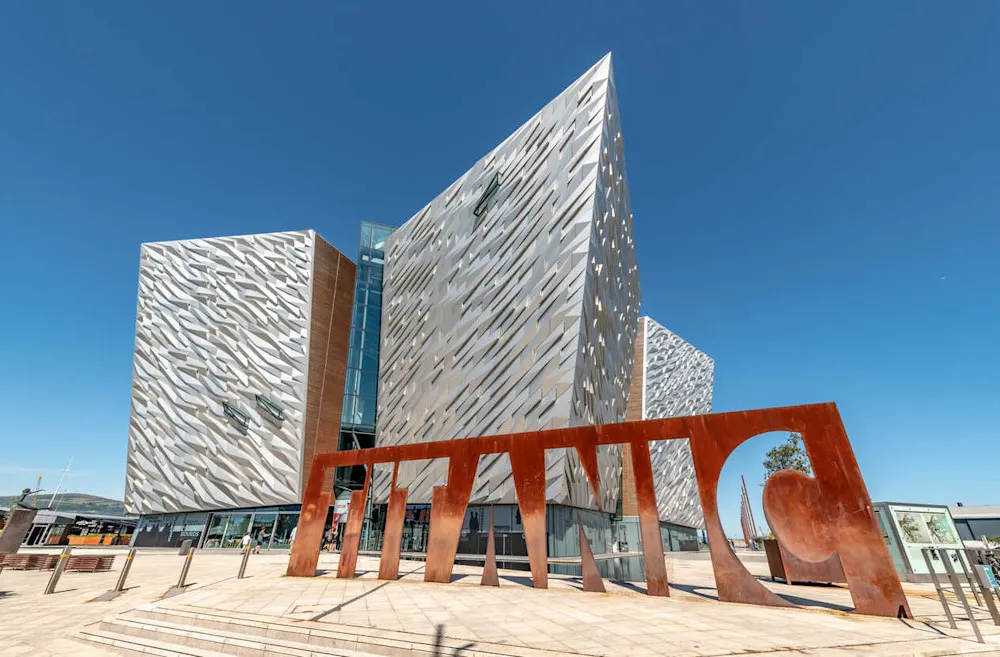
Wherever you choose as your base in Northern Ireland, you’ll find the locals friendly and welcoming. Cities, towns, and villages throughout the country offer a strong sense of home and hospitality.
There are seemingly endless opportunities to explore the outdoors and get involved in local life. Whether you meet new friends at your local golf course, lawn bowling club, or place of worship, or take up fishing, pottery, or art classes, you’re sure to find a pace of life in Northern Ireland that suits you.
If you’d like to travel further afield, Northern Ireland is ideally located for exploring the rest of Europe and beyond. There are direct flights to popular destinations including Cyprus, France, Italy, and Spain, to name just a few.
Final Thoughts
In a country where there are more sheep than people, you might expect the pace of life to be slower than what you’re used to—and, for the most part, it is.
Of course, just like anywhere else, Northern Ireland’s city and town centers are lively, and business gets done.
But newcomers quickly discover that people here take time to talk and listen. They work to live, not live to work, and they know how to relax.
For many who choose to make Northern Ireland their home, that slower pace is a welcome and wonderful change.
The World’s Best Retirement Havens for 2026
The World’s Best Retirement Havens for 2026
24 Countries Compared, Contrasted, Ranked, and Rated. You don’t have to be rich to enjoy a pampered retirement, you just need to know where to go. With our 35th Annual Global Retirement Index, our experts hand you a detailed roadmap. Details—and a Special Offer—Here

By submitting your email address, you will receive a free subscription to IL Postcards, The Untourist Daily and special offers from International Living and our affiliates. You can unsubscribe at any time, and we encourage you to read more about our Privacy Policy.
